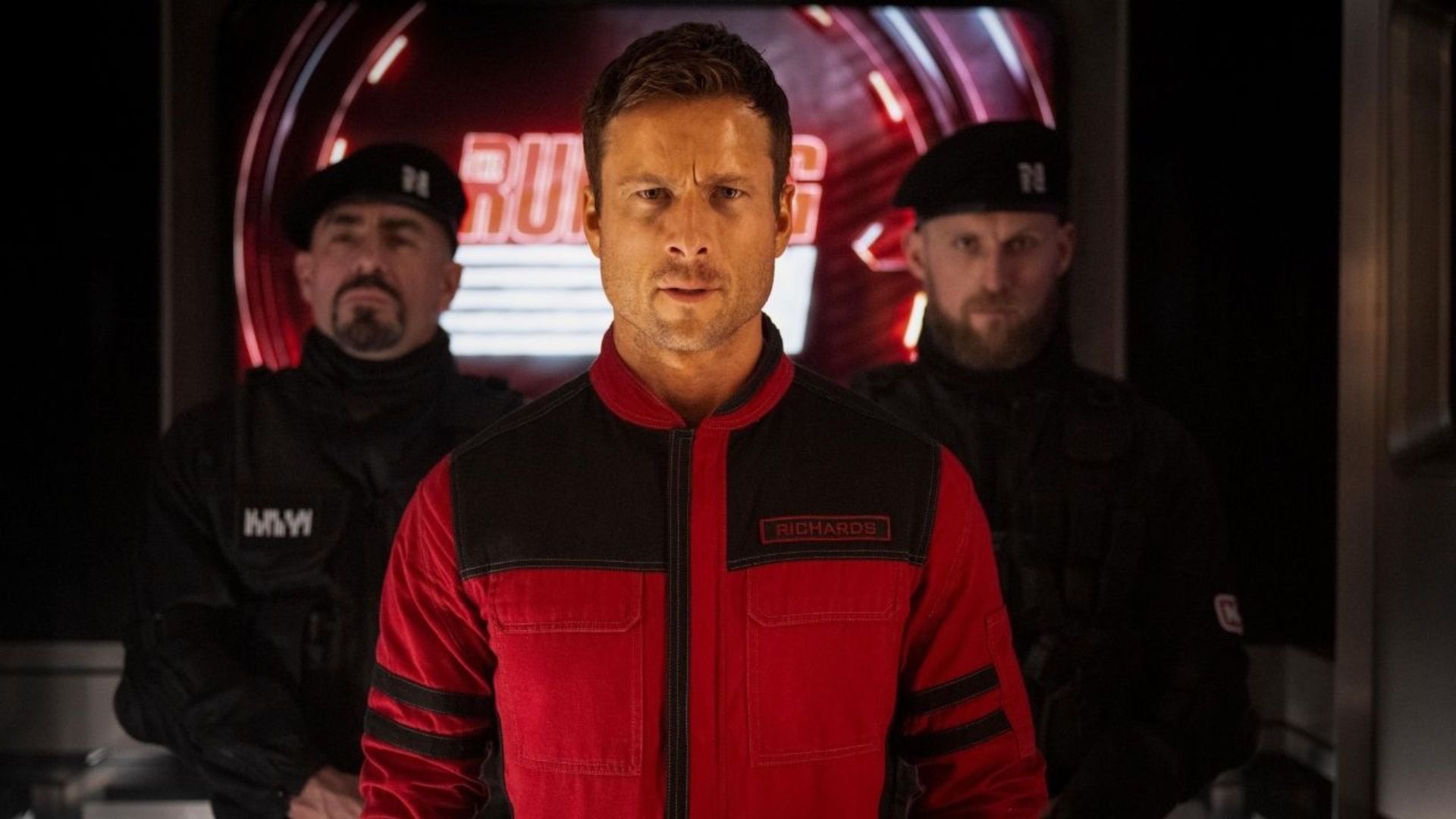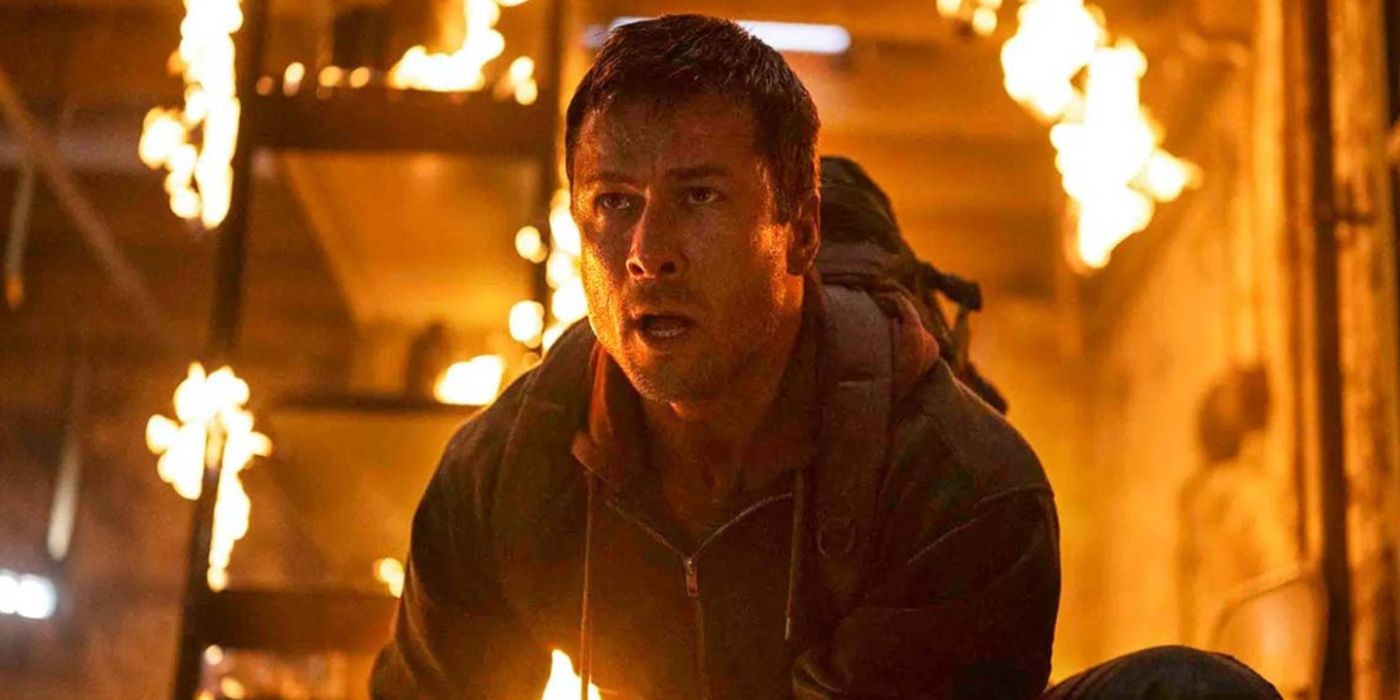
Stephen King’s novel, The Running Man (originally published under the name Richard Bachman), creates a gripping and bleak vision of the future. Set in the 2020s, the story portrays a dystopian America controlled by an oppressive government. Like The Hunger Games, the novel centers around a televised spectacle called The Running Man—a propaganda-fueled show designed to distract and control the population through the Games Network.
Glen Powell stars as Ben Richards, a man who joins the dangerous game show The Running Man only because he needs money to support his family – his wife and ailing daughter. The show is run by network executive Dan Killian (Josh Brolin) and hosted by the charismatic Bobby T (Colman Domingo). Once Richards becomes a contestant, he’s hunted by a team of soldiers, led by Evan McCone (Lee Pace), who are determined to eliminate him.
Warning: This includes SPOILERS for The Running Man!
Free-Vee & Games Network Explained

Paramount Pictures
The Running Man is the most popular show on Games Network, a government-run television channel that provides every home with ‘Free-Vees.’ These devices seem harmless, but they’re designed to control people through the programs they show. Games Network produces violent content, like one show Ben and his daughter watch where a man earns money by running on a treadmill until he tragically dies from a heart condition.
As a film buff, I was really struck by the show The Americanos within The Running Man. It’s basically a parody of Keeping Up With the Kardashians, and honestly, it feels designed to just…numb your brain. What’s scary is that both this show and the games on Games Network seem to be deliberately dumbing down and angering the population. It’s like the idea is to make everyone so glued to Free-Vee that they just accept whatever story the powerful people are pushing, instead of thinking for themselves. It’s not about inspiring people to fight back; it’s about turning them against each other, pitting working-class folks against each other. Free-Vee doesn’t unite, it divides.
In the world of The Running Man, traditional books and media are rare and considered strange. That’s why characters like Molie and Bradley rely on old-fashioned TV antennas – because without digital parts, they’re harder for the government to control. These simpler technologies are the only way rebel groups can share information without worrying about it being changed or blocked by artificial intelligence or other digital tools. Plus, the government-issued Free-Vee devices secretly watch citizens, making it easy to monitor their activity.
How ‘The Running Man’ Game Actually Works

Paramount Pictures
In the game The Running Man, three contestants are released into the world with a 12-hour head start before being actively hunted. The objective is to survive for 30 days, with each day earning the participant an increasing amount of “New Dollars.” To receive this money, contestants must submit daily 10-minute video logs, which are then reviewed and edited by the Games Network. The film depicts this editing as AI manipulation, twisting Richards’ words to portray him as a dangerous villain. Citizens can also participate by reporting the contestants’ locations, and are rewarded financially for doing so.
Daniel Ezra, known online as the Apostle, is a content creator who challenges the Games Network. He analyzes their shows, particularly The Running Man, highlighting contradictions and perceived dishonesty. He’s essentially studied how the network creates its content and recognizes a pattern in how contestants like Ben Richards are presented. He’s identified three common archetypes in The Running Man: 1) the hopeless contestant (Martin Herlihy), someone clearly unsuited for the show who quickly fails; 2) the negative contestant (Katy O’Brian as Laughlin), who focuses on the perks of the games rather than trying to survive; and 3) the ‘final guy’ archetype.
Ultimately, Ben Richards is who Games Network wants to be the last player standing – he’s the most popular with viewers and has the greatest chance of winning. They’ll bend the rules to keep him alive until the ‘negative man’ is eliminated, giving Richards a strategic advantage and allowing him to work with the rebels. This highlights that the Network isn’t fair; they’ll always change the rules to maximize their profits.
How ‘The Running Man’s World Differs in Books and Film

Paramount Pictures
As a big fan of both the movie and Stephen King’s novel The Running Man, I’ve always noticed how much the film diverges from the source material. They definitely upped the ante with the New Dollar amounts in the movie – a smart move to reflect inflation, I guess. But things like the ‘Apostle’ character and the whole idea of someone filming and spreading conspiracy theories? Totally made up for the film. The book doesn’t have any organized resistance movement helping Ben Richards either, which makes the ending far bleaker. And while the movie plays up the visual manipulation of Ben’s tapes, the book keeps it simpler – they just dub over them. It’s interesting how differently both versions approach the story!
The book doesn’t focus heavily on government or global politics, but it does show how Free-Vee has become the main way people get their news and information. Public libraries, once a common source of free information, are now expensive and inaccessible to most people in the world of The Running Man.
Read More
- Gold Rate Forecast
- BTC PREDICTION. BTC cryptocurrency
- How To Watch Under The Bridge And Stream Every Episode Of This Shocking True Crime Series Free From Anywhere
- Breaking Down How Much the Dallas Cowboys Players Make vs Cheerleaders
- One Piece’s Elbaf Arc Unveils the Past Behind This Legendary Pirate Crew
- Demon Slayer: Infinity Castle Is Taking Over the World & Anime Is Getting Harder to Deny
- Silver Rate Forecast
- The 10 Most Spine-Chilling Spider-Man Villains
- The Unexpected Crypto Gambit: T. Rowe Price’s Bold Entry into the Abyss
- The Longest-Running Anime Crime Drama Is Finally Coming to the U.S. After Almost 30 Years
2025-11-14 03:34